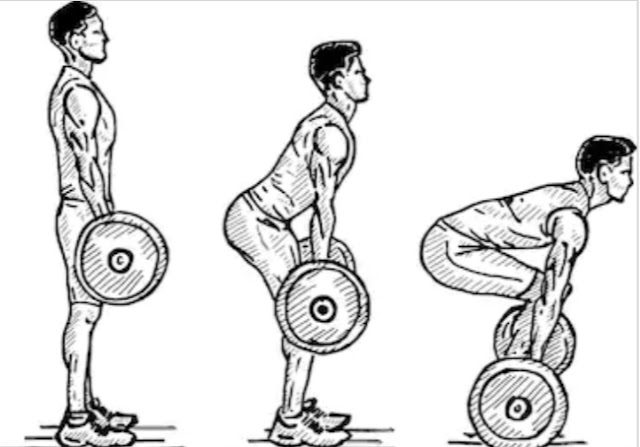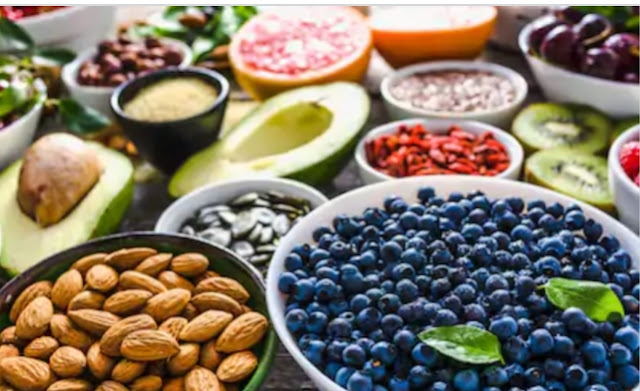Supplements
When it comes to improving your health, fish oil has had a checkered history. Since the 1990s, research has made it an on again/off again health-improving supplement (read all about the back and forth here). And now, there’s a study of more than 1,600 young men (who averaged just under 19 years of age) published in JAMA Network Open by scientists from Harvard, the University of Copenhagen, and the University of Southern Denmark that found that those who took fish oil supplements had higher semen volume and total sperm count as well as larger testicular size.
This suggests better
testicular function among the fish-oil-taking guys, which is a good thing, as some scientists hold that men’s semen quality has been tanking in the past 50 to 70 years. And according to data cited by this study, about 40 to 50 percent of fertility issues are due to male factors. Even if you’re not concerned about fertility right now, sperm health can be an indicator of your overall health, so it’s worth paying attention to
(see more about that here).
So this is promising. Taking fish oil is an easy and popular thing to do. And we like easy and healthy things to do. But this is definitely not the last word on all of this. First of all, it’s a recall study – so the guys weren’t put on fish oil; they just had to say whether they took it regularly for the past 60 days, so there’s no guarantee they remembered right. And second, the number of guys who actually took these supplements was pretty low.
So here’s the thing: If you take fish oil supplements already, then you may be getting this great benefit. If not, it’s hard to say whether this is enough evidence to suggest you jump on them. One step, if you want to try to reap the healthy benefits of fish oil, is to start eating more actual fish (some research has found this to boost sperm count as well). It’s easier—and tastier—than you think. Let us show you how to buy fish, and the easiest way to cook salmon.
Study population
Of the 736 women participating in the COPSAC2010 cohort, 693 were included in the n-3 LCPUFA trial and 580 in the vitamin D trial and delivered at least one microbial sample to our study. 695 children born to these women were included in the n-3 LCPUFA trial and 581 in the vitamin D trial and delivered at least one microbial sample. The same cohort was subject to both interventions in a factorial design with some mothers receiving only placebo, some mothers receiving either supplement, and some mothers receiving both. Randomized allocation among the included women produced comparable groups with respect to baseline characteristics (Table 1).
Table 1 Baseline characteristics of the n-3 LCPUFA and Vitamin D randomized controlled trials. Longitudinal development of the microbial community
We successfully sampled and sequenced the V4 region of the 16S bacterial rRNA gene in 4991 samples, with a mean sequencing depth of 54,682. The total number of unique OTUs found across all samples was 6846 (see Supplementary Table 1). Here follows a short resume of the microbial longitudinal development in the maternal vaginal, and infant fecal and airway samples of the COPASAC2010 mother-child cohort: In the maternal vaginal samples the average bacterial composition in samples from week 24 and 36 appeared similar and were dominated by the genera Lactobacillus and Gardnerella accounting for ~80% and 10% of the sequencing reads, respectively (Fig. 1).
Fig. 1: Bacterial community composition in children’s feces and airway, and maternal vaginal samples over time.
The community composition is represented by the 12 most abundant genera. Each bar is represented by 544 to 665 samples. Source data are provided as a Source Data file.
In the infant fecal samples the composition in samples from the infants taken at 1-week and 1-month were dominated by Bifidobacterium, Enterobacteriaceae, and Bacteroides. In the 1-year fecal samples, we observed a significant decrease in Enterobacteriaceae, Staphylococcus, Streptococcus and Bifidobacterium in favor of Bacteroides and a generally larger proportion of overall lower-abundance genera, including Faecalibacterium and Prevotella.
In the infant airway samples the three major genera taken at 1-week after birth were Staphylococcus, Streptococcus and Moraxella. In the subsequent samples from 1-month and 3-months, we observed a gradual increase in the relative abundance of Streptococcus, Moraxella, and Haemophilus, as well as a decrease in Staphylococcus. More details on the individual sample types can be found in previous publications16,22 (Mortensen, M. S. Et al. Stability of Vaginal microbiota during pregnancy and its importance for early infant microbiota. Unpublished)
Effects of the n-3 LCPUFA and vitamin D interventions
The vaginal samples were taken at pregnancy week 36, twelve weeks into the supplementation with n-3 LCPUFA and vitamin D, totaling 665 samples, and did not show any significant differences in alpha diversity as a result of either intervention calculated using the Shannon index (see Supplementary Fig. 1). Similarly, no significant changes in beta diversity were observed in the vaginal samples as a result of the two dietary interventions (Table 2).
Table 2 The effects of n-3 LCPUFA and Vitamin D vs. Placebo on microbial beta-diversity.
The infant fecal microbiota was sampled at 1-week, 1-month, and 1-year after birth, totaling 552, 607, and 625 samples, respectively. No significant effects were seen of the two dietary interventions neither on alpha diversity (Supplementary Fig. 1) nor beta diversity (Table 2) at any of the time points.
Infant airway samples were taken at 1-week, 1-month, and 3-months, totaling 544, 645, and 622 samples, respectively. No effects were seen on alpha diversity at any of the three time points (see Supplementary Fig. 1). However, at 1-month of age, both interventions affected the microbial composition (PERMANOVA, n-3 LCPUFA (F = 3.74, p = 0.005), and Vitamin D (F = 4.228, p = 0.004) (Table 2). No interaction between the two interventions was observed (PERMANOVA, F = 0.49, p = 0.785), and the effect of each intervention remained significant after adjusting for common covariates, which might affect the microbiota (delivery, older siblings, antibiotics during pregnancy, antibiotics in the first month of life, birth season, cat at home at birth, dog at home at birth, and sex). To study the microbial composition effects at 1-month in more detail a differential abundance (DA) analysis was made on the most abundant phyla and genera (Fig. 2). Both
interventions led to a significant decrease in Firmicutes and a corresponding increase in Proteobacteria (Fig. 2a, b). These changes seemed mainly to be driven by decreases in the genera Streptococcus and Staphylococcus with an increase in Moraxella, although neither of these individual changes were statistically significant (Fig. 2c, d). In addition, n-3 LCPUFA supplementation resulted in a significant decrease in the two genera Gemella and Veillonella (Fig. 2c). An additional DA analysis was performed on OTU level including also less abundant OTUs, hoping to find rare but important taxa affected by the interventions (Supplementary Fig. 2). N-3 LCPUFA significantly (metagenomeSeq, p < 0.05) increased the abundance of four OTUs, and decreased the abundance of six OTUs including three Veillonella (Supplementary Fig. 2, and Supplementary Table 2). Vitamin D increased the abundance of six OTUs including two Neisseria and two Haemophilus while decreasing the relative abundance of seven Streptococcus OTUs, five of which was putatively identified a S. Pneumoniae, and the rest as S. Mitis or S. Oralis. However, none of the effects on single OTUs were significant after correcting for multiple testing (FDR, p < 0.1).
Fig. 2: Relative bacterial abundances stratified by intervention groups for the 1-month airway samples.
Relative abundances are shown at the phylum-level (a and b), and genus-level (c and d). The three most abundant phyla and nine most abundant genera are shown. Phylum level DA statistics were performed using Wilcoxon rank sum test and genus level DA using the metagenomeseq feature model. Boxplots with first and third quartiles corresponding to the lower and upper hinge, the median represented by a vertical line, the mean by a black dot, upper/lower whiskers extend to the largest/smallest value no further than 1.5 * inter-quartile range (IQR) from the hinge, and outliers are shown as gray circles. In bold are crude p-values reaching FDR corrected significance at level 0.1. N = 653 and 541 independent samples for the n-3 LCPUFA (a + c) and Vitamin D (b + d) plot, respectively. Source data are provided as a Source Data file.
The 1-week and 3-month infant airway samples did not reveal any beta diversity differences between the intervention groups (Table 2).
Additive effects of n-3 LCPUFA and Vitamin D
Since both interventions showed significant effects on the 1-month airway microbial composition and similar shifts on both phylum and genus levels, the possibility of an additive effect was further explored using a PCoA stratified by the two intervention groups (Fig. 3). We observed a rightward shift on PCo1 according to intervention, i.E., with the group receiving both n-3 LCPUFA and vitamin D on the right, the groups receiving only one intervention in the center, and the group receiving placebo in both interventions on the left (p < 0.001, Wilcoxon rank sum test). Building on this concordance between n-3 LCPUFA and vitamin D effects, a correlation analysis was performed, using the number of interventions against the relative abundances of individual phyla and genera (Fig. 4). This confirmed the previous results of the individual interventions, showing a stepwise significant decrease in Firmicutes and an increase in Proteobacteria as a function of the number of interventions received (Fig. 4a). At the genus level, Streptococcus significantly decreased and Moraxella increased (Fig. 4b), although these exploratory findings did not reach FDR corrected significance at level 0.1.
Fig. 3: Ordination of 1-month airway samples stratified by intervention group.
An additive effect is apparent in the right shift observed over PCo1 as samples are subject to either (n-3 LCPUFA/placebo (n = 125), or placebo/vitamin D (n = 141)) or both prenatal dietary interventions (n-3 LCPUFA/vitamin D (n = 131)) compared to double-placebo (placebo/placebo (n = 144)) (p < 0.001, Wilcoxon rank sum test). Boxplots represent the PCo1 values of each intervention group with first and third quartiles corresponding to the lower and upper hinge, the median represented by a vertical line, and the upper/lower whiskers extend to the largest/smallest value no further than 1.5 * inter-quartile range (IQR) from the hinge. Source data are provided as a Source Data file.
Fig. 4: Additive effects of the interventions on the 1-month airway samples.
Relative abundances are shown on (a) Phylum level and (b) Genus level. The correlation was analyzed by Spearman’s rank correlation coefficient and p-values below 0.05 are shown. The p-values in b are not significant when correcting for multiple testing using an FDR corrected significance of 0.1. Boxplots with first and third quartiles corresponding to the lower and upper hinge, the median represented by a vertical line, the mean by a black dot, upper/lower whiskers extend to the largest/smallest value no further than 1.5 * inter-quartile range (IQR) from the hinge, and outliers are shown as gray circles. N = 144, 266, and 131 for the zero, one, and two intervention groups, respectively. Source data are provided as a Source Data file.
Additive increases were also seen for Neisseria, Corynebacterium, and Haemophilus and additive decreases for Staphylococcus, Gemella and Veillonella, although neither of these trends were statistically significant (Spearman’s rank correlation coefficient, p > 0.05) (Fig. 4b). The grouping of the cohort into number of interventions (0, 1, and 2) still produced comparable groups with respect to baseline characteristics (Supplementary Table 3).
Mediation analysis
After documenting the effect of n-3 LCPUFA and Vitamin D on the 1-month airway microbiota, we wanted to study if these changes could serve as a mediator for the previously observed protective effect of the interventions on childhood asthma. To do this we used PCo1 from Fig. 3 as a surrogate of the intervention induced microbiota changes in a mediation analysis using parametric survival regression models with the debut of persistent wheeze or asthma as end-points (Supplementary Table 4). We found that the 1-month airway microbiota effect from n-3 LCPUFA supplementation could account for an estimated 9% of the total asthma prevention effect till age 5 years (p = 0.11) previously published3. Similarly, 5.5% of the previously published vitamin D effect on persistent wheeze till 3 years of age could be mediated by changes in the 1-month airway microbiota (p = 0.39)4. However, none of the minor mediation effects were statistically significant, suggesting that the microbial changes observed as a result of the two dietary supplements had a minor or no effect on later risk of asthma.
The interventions and gut and airway microbial maturation
As early microbial colonization patterns have previously been linked to later health outcomes we wanted to study the influence of the interventions on the early life microbial maturation. To do that we calculated the microbiota-by-age z-score (MAZ) for the gut and airway samples, with both compartments represented by three sampling time points23. No effect of either intervention on MAZ was seen on any of the gut samples, and on the 3-month airway samples. However, n-3 LCPUFA decreased the airway maturation in the 1-week time point (t-test, p = 0.004), and increased the maturation in the 1-month time point (t-test, p = 0.01). The Vitamin D intervention had a weaker and not significant effect, although the same trend was observed at both timepoints. An additive effect of the interventions was also observed decreasing the MAZ with 0.2 per intervention (p = 0.007) at the 1-week and increasing with 0.1 per intervention (p = 0.05) at 1-month.
Interventions, airway microbiota, and airway immunology
To study the mechanism of the observed changes in airway microbiota in the 1-month time point, we analyzed the association between PCo1 from Fig. 3, affected by both interventions, and airway immunology taken at the same time point. We found a significant positive association between PCo1 and CCL4, TNF-α, CXCL8, and IL-1β, and a significant negative association between PCo1 and CCL2, and CCL17 (Fig. 5).
Fig. 5: Associations between intervention driven microbiota changes in the 1-month airway and neonatal airway immunology.
PCo1 from Fig. 3 was used as a metric for the intervention driven microbial changes and analyzed with the airway concentration of 20 local immune mediators in the nose, also measured at the 1-month time point. Linear models show that PCo1 is associated with several immune mediators, expressed as relative concentration ratios of immune mediators per standard deviation (SD) increase in PCo1, n = 585 independent samples. Error bars represent 95% confidence intervals. Source data are provided as a Source Data file.
Effect modulation by mode of delivery
To investigate possible mechanisms of the intervention effects on the 1-month airway microbiota, we examined potential effect modulation by mode of delivery. If the interventions had direct effects on the maternal gut microbiota, an assumed transfer to the child could be interrupted by cesarean section delivery. However, no significant interaction was observed neither for delivery mode on the global beta diversity variation (adonis, p = 0.58) nor the shift in PCo1 (linear model, p = 0.29) of the 1-month airway samples.
Vegetarian Supplements: What You Need To Know To Stay Healthy
Knowing which vegetarian supplements to take can be a tall task, especially if you've only recently peeled over to the veg-side and are still finding your feet amongst all the nuts and grains.
From what vital vitamins and minerals might your meat-free diet be missing to how the hell should you go about rebalancing the internal scales, there's a plethora of confusing moments, not least for the new-veggie.
Well, we consulted the experts: award-winning nutritionist and author Anita Bean and nutritionist Jenna Hope, to find out exactly how to live your #mostwelllife as a vegetarian and pitched them some of your top frequently asked questions when it comes to vegetarian supplements and deficiencies.
Are ya ready? Go on then.
1. Is it healthy to be a vegetarian?
'It is possible to eat a healthy balanced diet on a vegetarian and there’s also an environmental benefit to eating more plants and less animal products,' evaluates Hope.
'Although, this isn’t to suggest that eating a vegetarian diet is automatically healthier than a diet which contains meat. It’s important to be aware of your food quality to ensure you’re getting your nutrients in where possible. Animal based products do have their benefits too,' she says.
2. Am I at risk of deficiencies if I adopt a vegetarian diet?
Common risks include: iron, vitamin D, Omega-3 and Vitamin B12.
'Although, if you’re consuming enough milk and plant sources of iron then these shouldn’t be a problem,' says Hope. 'In some cases, supplementing with Omega-3 may be beneficial (although please speak to your healthcare provider first). Vitamin D supplementation is recommended for the general public (vegetarian or not).'
3. Do I need supplements as a vegetarian?
Okay, so the pros are really stacking up for a vegetarian diet - you can hit your protein goals, grow lean muscle and strength and, honestly, it sounds bloody tasty.
Something that can't be avoided is the fact that the foods you may no longer be eating do contain certain vitamins and minerals that will need to be replaced in your veg-first diet.
Omega 3
Vital for heart health and brain function Omega-3 is an essential fatty acid that reduces the natural inflammation that occurs in your body post-exercise as well as promoting recovery.
The main plant sources of Omega-3 are short-chain fatty acids that can be found in nuts, flaxseeds, chia seeds and pumpkin seeds. If these are tiresome (or too expensive) to add into your everyday diet, perhaps consider a vegetarian Omega-3 supplement that's based on algae oil.
Iron
'Iron is really important, especially if you're exercising,' emphasises Bean. 'It facilitates the production of haemoglobin, the oxygen-carrying protein in your red blood cells. Having low-levels puts you at much greater risk of iron deficiency and anaemia that can lead to persistent tiredness, breathlessness or poor performance during exercise,' she says.
Iron derived from plant-based sources though can be less bioavailable than animal products, meaning if you were to try and achieve your daily quota from food and food alone, some adjustments may me needed.
Try combining plant sources of iron - such as chickpeas - with lemon juice as the vitamin C from the lemon will aid the absorption of the iron.
Wholefood iron-rich sources:
Whole grains
Quinoa
Nuts and seeds
Pulses: beans, lentils, chickpeas and leafy green vegetables
4. What vitamins do vegetarians need? Vitamin C
While iron is a much needed mineral, the bioavailability (how easy your body finds it to extract the iron from the source) of iron can be greatly improved by incorporating more vitamin C into your diet.
'Vitamin C and citric acid, the exact type found naturally in fruits and vegetables promotes iron absorption,' Bean says, 'which makes it a must-have for a vegetarian diet.'
Vitamin C containing foods:
Red peppers
Broccoli
Oranges
Berries - raspberries, blueberries, strawberries
Vitamin C 20 Effervescent Tablets
Wild Nutrition Vitamin C & Bioflavonoids (60 caps)
Vitamin D3 Drops 2000 D3 Drops per Bottle
Boots Vitamin D 90 tablets
According to nutritionist Hope, it's recommended that everyone supplements with Vitamin D, regardless of whether you choose to eat meat or not. A key nutrient, Vitamin D helps to keep bones, teeth and muscles healthy by managing the amounts of calcium and phosphate in the body. Although it is an incredibly difficult nutrient to get purely from diet, it does appear in small quantities in:
5. What are the cons of eating a vegetarian diet?
'Much like any diet that cuts out entire food groups there is a risk of nutrient deficiencies. Although, if you’re clued up about where you’re getting the high-risk nutrients from then there shouldn’t be a problem,' says Hope.
However, she continues: 'In some cases, such as is the case for some individuals with severe iron deficiency anaemia (IDA) it may be suggested to consume small amounts of meat if possible' – if you suspect your iron levels might be too low or you're feeling exceptionally fatigued, it’s recommended to speak to a healthcare professional with regards to IDA before making any further changes to your diet.
Like this article? SIGN UP TO OUR NEWSLETTER to receive your weekly dose of features.





















